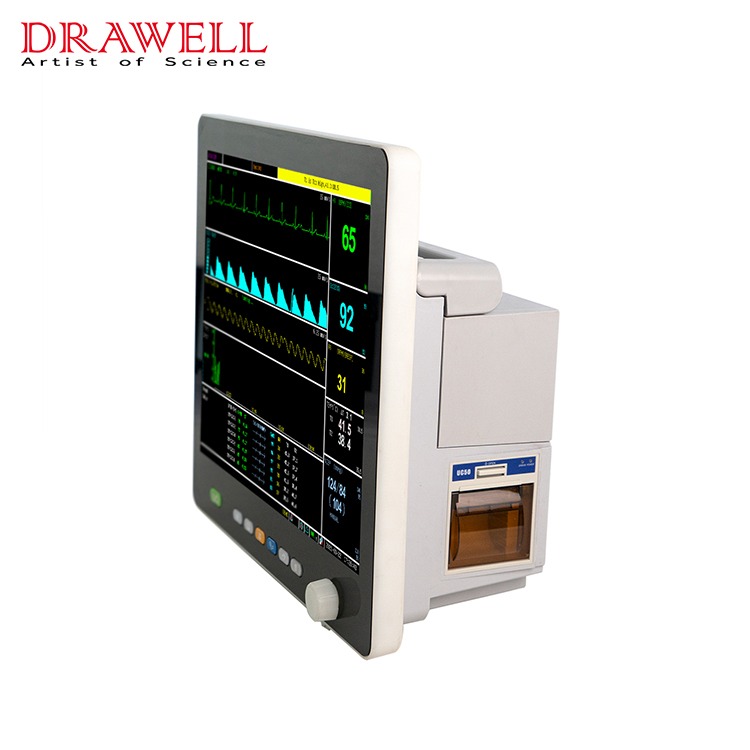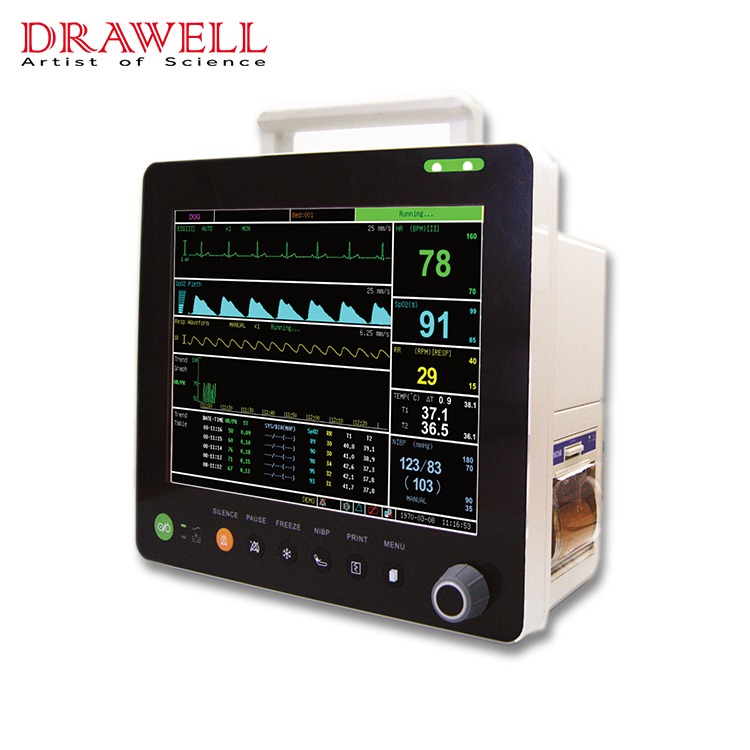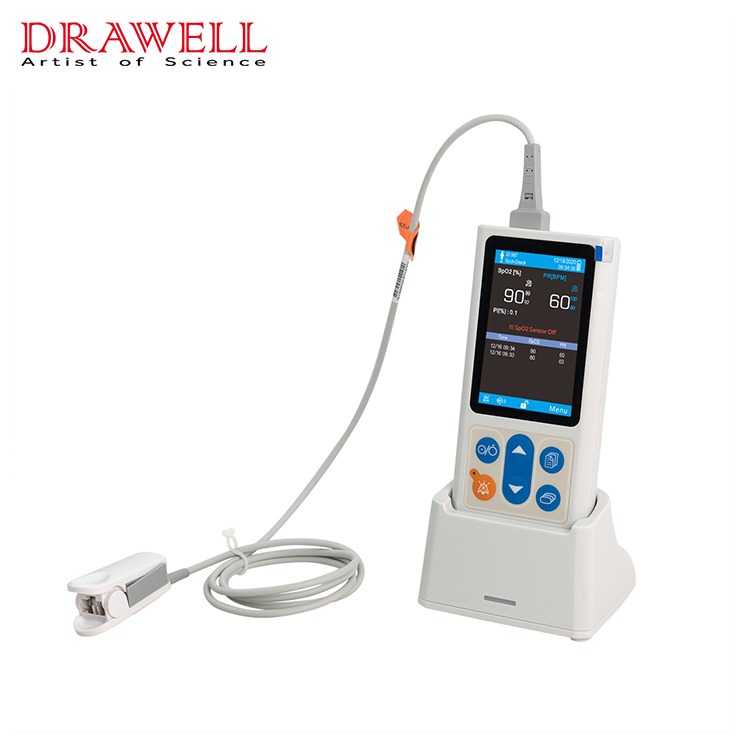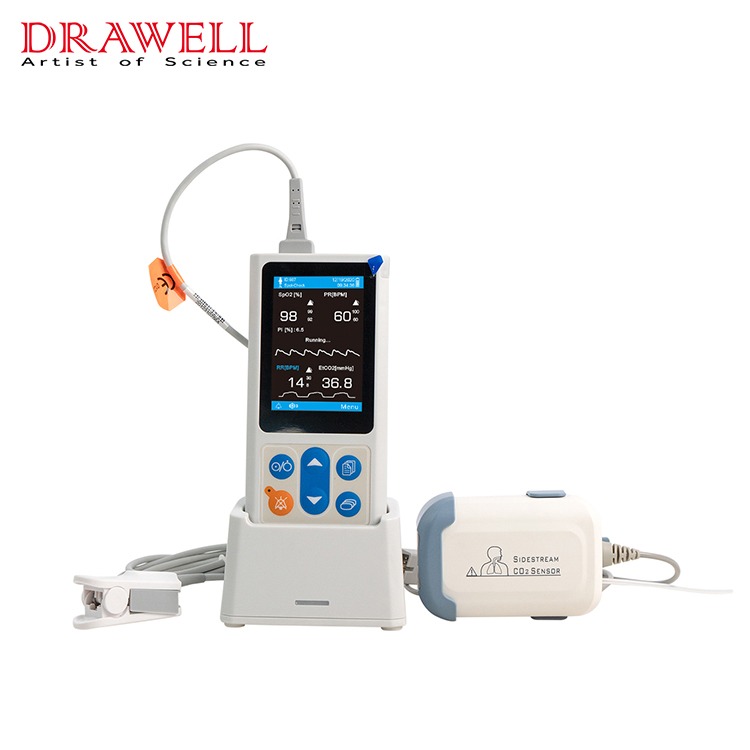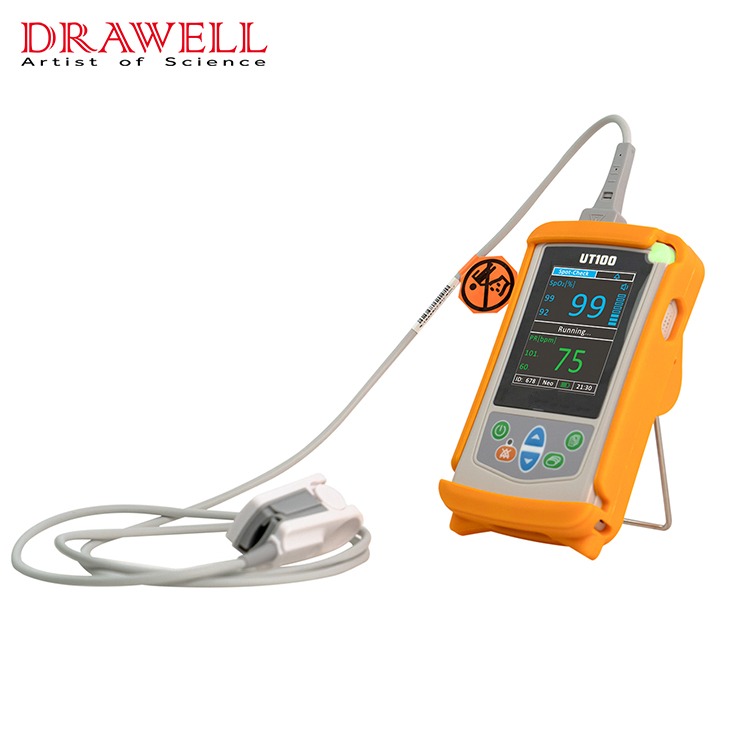The patient monitor, which is the basic equipment configuration of hospitals at all levels, is being widely used in ICU, CCU, anesthesia, operating rooms, and clinical departments of hospitals, which can provide important information on patients’ vital signs to medical staff. Today, this article will take you to understand the patient monitor definition, patient monitor function, patient monitor use, patient monitor working principle, and attention to the patient monitor.
Patient Monitor Definition
A patient monitor is a conventional medical device that mainly monitors basic vital parameters such as ECG, respiration, non-invasive blood pressure, blood oxygen saturation, pulse, and body temperature.
In addition, optional patient monitor parameters include invasive blood pressure, end-tidal carbon dioxide, respiratory mechanics, anesthetic gas, cardiac output (invasive and non-invasive), EEG bispectral index, etc.
As for patient monitor use, the patient monitor is widely used in emergency departments, operating rooms, general wards, intensive care units, etc. This patient monitoring system is a device or system that measures and controls the patient’s physiological parameters and compares them with known set values, and sends out an alarm if it exceeds the standard.
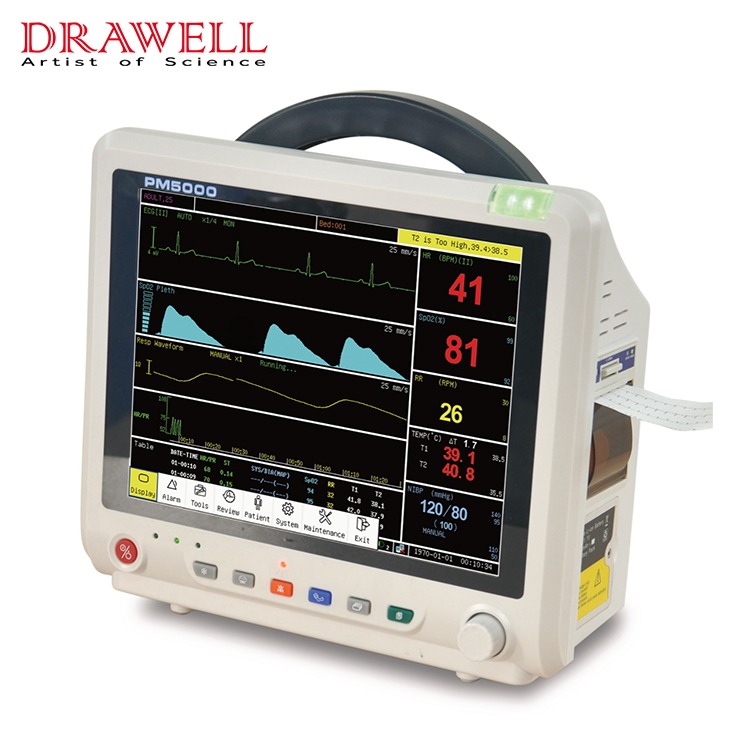
What Is the Patient Monitor Function?
The role of the patient monitor is introduced in the following:
The patient monitor is one of the most popular medical instruments in clinical applications, and it is the necessary equipment for the emergency department, operating room, and ICU.
In addition to measuring and monitoring the patient’s physiological parameters, the patient monitor can also monitor and deal with the patient’s medication and condition before and after the operation.
The use of patient monitors provides a basis for doctors to make the correct diagnosis and formulate medical plans and greatly reduces the mortality rate of critically ill patients.
What Is the Patient Monitor Working Principle?
The working principle of the patient monitor includes analyzing the working principle of patient monitor from its system structure, circuit structure, etc., and also analyzes the working principle of patient monitor monitoring various physiological parameters, and summarizes its application in medicine.
Patient Monitor Components
The patient monitor adopts a plug-in design, and the cardiopulmonary resuscitation quality monitoring unit cooperates with the host to complete the cardiopulmonary resuscitation quality monitoring function.
The cardiopulmonary resuscitation quality monitoring unit consists of a blood oxygen module with a cardiopulmonary resuscitation quality index function (including blood oxygen software components) and a blood oxygen probe.
application of patient monitor products
Application Of The Patient Monitor
The cardiopulmonary resuscitation quality monitoring function is expected to be used by clinical medical staff to evaluate the effectiveness of cardiopulmonary resuscitation in adult patients. In clinical practice, the quality of cardiopulmonary resuscitation should be comprehensively evaluated in combination with the patient’s medical history, the cause of cardiac arrest, other diagnostic results, and the professional judgment of the clinician.
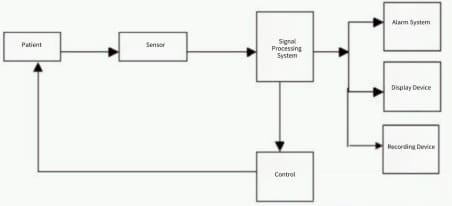
What Is the Process of Patient Monitor Use?
The process of patient monitor use is very simple. You only need to do 7 steps in the following.
1. Prepared items: mainly include ECG monitor(i.e patient monitoring system), ECG blood pressure plug-in connecting wire, electrode sheet, blood oxygen probe, blood pressure extension tube, blood pressure cuff, etc.
2. Connect the power supply of the ECG monitor (patient monitor) and turn on the switch.
3. Put the patient in a supine or semi-recumbent position.
4. Wipe the skin of the patient’s chest where the electrodes are attached with a saline cotton ball.
5. Paste the electrodes, connect the ECG lead wire, and the ECG oscillogram will appear on the screen.
6. Wear the blood oxygen saturation finger cot/finger clip.
7. Tie the cuff to the two horizontal fingers on the elbow fossa, and set the alarm limit to measure blood pressure.
What Should Be Paid Attention To When Patient Monitor Monitoring?
When you use the patient monitor, you should pay attention to the following 7 points.
- The patient monitor must be placed on the platform, and the surrounding area should be kept dry to avoid moisture.
- Do not use the computer or use a mobile phone when using patient monitor monitoring, so as not to affect the test results due to electromagnetic wave interference.
- Properly fix each wire to avoid folding, twisting, winding, etc., and it is not suitable to pass through the armpit to avoid falling off.
- Inform the patient that the patient monitor cannot be moved at will to prevent the lead from falling off.
- Patients are not allowed to remove or move the electrodes at will, and if there is redness and itching of the surrounding skin, inform the medical staff in time.
- Patients and their family members are not allowed to adjust the patient monitor function and patient monitor parameters while patient monitor monitoring at will.
It is forbidden to measure blood pressure on infusion or intubation limbs, and it is forbidden to tie cuffs for those with local skin damage.

